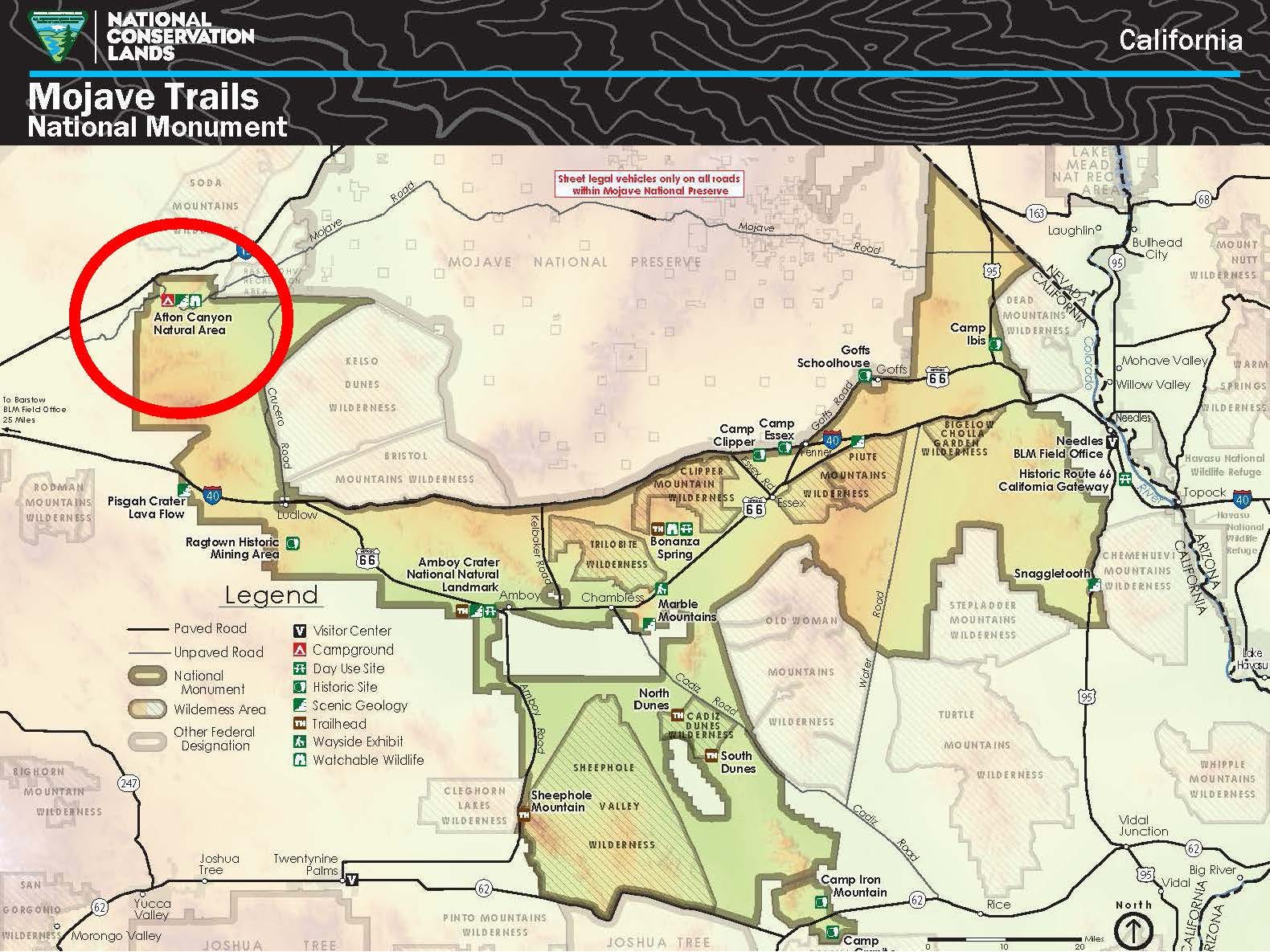Wildlife cameras pinpoint movement of protected bighorn sheep
This post was originally published on this site

Take a close look at the horns of this desert bighorn sheep. The rings are a sign of how old he is. This detailed image is from a wildlife camera in Mojave Trails National Monument. For the past few months, the Women in Science Discovering our Mojave (WISDOM) project has been analyzing data from seven cameras to better understand the movement of bighorn in one area of the National Monument. The results are now in.
The seven cameras were placed in Afton Canyon, in the northwest part of the National Monument. A Bureau of Land Management biologist predicted where the desert bighorn sheep (Ovis canadensis nelson) might be moving.

Crucially for the desert bighorn, there are steep canyons where they can watch for predators like the mountain lion and coyotes. There’s also water.
Afton Canyon is one of the few places where the Mojave River flows above ground year-round. Water sources like this are rare in the Mojave Desert. According to the National Park Service, “during searing summer temperatures, bighorns will drink gallons of water at springs and other water sources. Access to water in the summer is particularly crucial for pregnant ewes. Walking on canyon floors toward a spring or coming down from a mountain range to a flowing river is one of the most dangerous ventures for bighorn sheep.”
WISDOM, a program run by the Mojave Desert Land Trust in collaboration with BLM, aims to engage young women in the Science Technology Engineering and Math (STEM) fields by conducting scientific research, both in the field and in the office. It is made possible by Southern California Edison. Recruiting female interns from diverse backgrounds, helps reinforce the BLM’s quest for inclusion per EO13583. The pilot program focuses on camera data collected on bighorn sheep movement, population health, and herd size of bighorn sheep in Afton Canyon.

With the data retrieved and analyzed, interns found that Afton Canyon has an assortment of wildlife activity. Most bighorn sheep were found in the northwest part of the canyon, where off-highway vehicle activity is low. Bighorn sheep were found to travel throughout the canyon during the day with temperatures ranging between 46° to 122° Fahrenheit. They have been captured traveling alone, in pairs or in herds representing a mixture of rams, ewes, and lambs.

Data also shows that the canyon is frequently used by humans for a multitude of recreational activities. Human presence made up 71% of the overall activity captured by the cameras, while the other 29% is from wildlife. Afton Canyon Natural Area, a 45-minute drive east of Barstow, attracts a diverse group of people.

While this round of the WISDOM internship program has come to an end, data collection on the movement of bighorns will continue. MDLT is working to expand the scope of the project to help the BLM provide a range of recreational access in the National Monument, including hiking in the canyon, while also ensuring the well-being and protection of wildlife and other sensitive resources.
Through the program internship, these young scientists will gain a better understanding of scientific practices, BLM management challenges, desert conservation, and will engage young people in a meaningful way.
A BLM volunteer intern will be continuing to visit Afton Canyon until the program resumes.
Desert bighorn (Ovis canadensis nelsoni) are a protected species. They migrate during the different seasons, accessing areas that have food, water, and shelter. They can be found in valley floors and up in the high rocky areas of the desert. Within Afton Canyon, they can stay up high to avoid predators or come down to drink and forage for food. They generally move in large herds.
Women in Science Discovering Our Mojave is made possible through a grant from Southern California Edison. In this unique program, the Mojave Desert Land Trust, in conjunction with the Bureau of Land Management, aims to engage women in the field of science.
